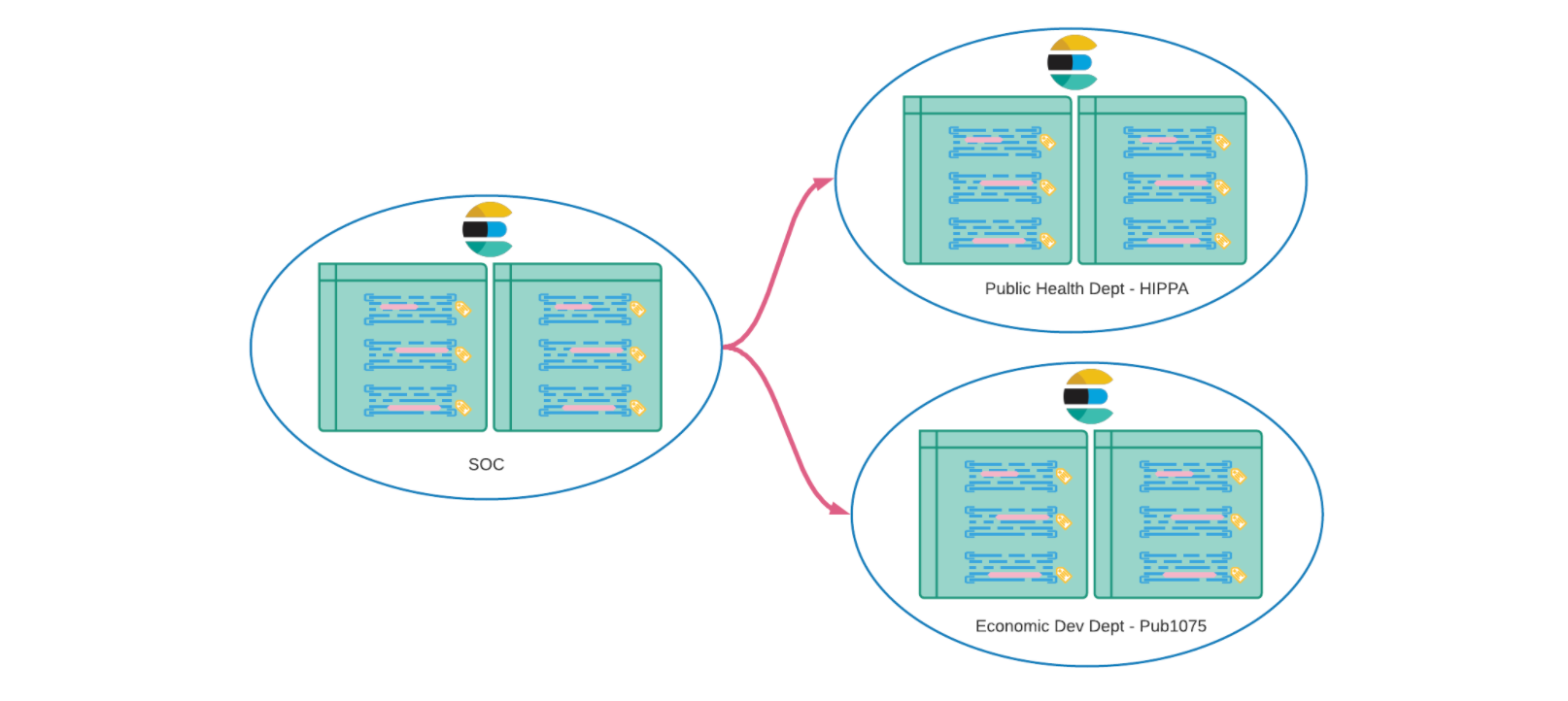How search enables role-based data classification and sharing across the government

Government data strategies lay a promising groundwork for how data will be used to drive more informed decision making internally and more streamlined public services externally. A commonality between these strategies is the need for improved role-based data sharing and data re-use. The sticking point, however, is in the way to implement data sharing when there are known silos across and within various departments. More often than not, these silos exist for good reason, particularly for data privacy compliance requirements.
How can these hurdles be overcome and the promise of data sharing across government departments be realized?
Key stakeholders of government data sharing initiatives
Before tackling this dilemma, it’s important to understand the key stakeholders of government data sharing initiatives. Let’s look at a hypothetical state government example where the state wants to get a more granular understanding of public health matters impacting small business start-ups and growth, employs a shared IT services model, and has a new data science practice. In this scenario, stakeholders include:
- Line of business departments: At a minimum, the economic development department would have relevant data to consume, as would the public health department.
- Information resources or information technology team: This team ensures the IT infrastructure can handle the individual department workloads and monitors overall security of the shared infrastructure.
- Data science resources: These resources may be pulled in to assist the economic development and public health departments make sense of data for their near-term reporting, but they may also look to perform analysis for longer term outlooks.
Working with silos and compliance requirements
In this scenario, both the economic development and public health departments will need to draw upon siloed data that is subject to data privacy compliance requirements. The economic development department will likely have tax data subject to Publication 1075 (Pub 1075), which helps government agencies safeguard federal tax returns and return information, and the public health department will likely have health related data protected under the Health Information Portability and Accountability Act (HIPAA). How can role-based data sharing occur under these conditions?
The first step to working with silos and compliance requirements like this is to classify data. At Elastic, we help government customers work across silos by classifying data at its source and normalizing it for querying using a common schema. Data classification starts by tagging data using an add_tags processor on the Beats/Elastic Agent, and additional transformations can occur in the data pipeline with Logstash and ingest pipelines.
Data normalization then occurs using the Elastic Common Schema (ECS). ECS is an open source specification that facilitates the analysis of data from diverse sources by defining a common set of document fields for ingested data. ECS enables users to overcome data formatting inconsistencies that result from disparate data types, heterogeneous environments with diverse vendor standards, or similar-but-different data sources. With ECS, the data is not only available in a common format, it’ is also classified for role-based access control so that it’ is clear what data can and cannot be shared. Field level document access control can also be applied so that specific attributes, including Personally Identifiable Information (PII), may only be viewed by those with the appropriate access level.

Next, with Elastic Cross-Cluster Search (CCS), those with role-based access use search to analyze data stored on clusters, which can be in different data centers. The data resides in its compliant environment but is queried at the endpoint. These queries can also be re-used for additional operational efficiency. In this way, Elastic helps users bring questions to the data, even if silos exist — enabling compliant inter-departmental data sharing through the power of search. Our hypothetical example addresses Pub 1075 and HIPAA compliance requirements, but this functionality extends to information security requirements that other departments would have for their particular use cases, such as NERC/CIP or special Security Operations Center (SOC) requirements.

Visibility for day-to-day security and long-term analytics
In our state government scenario, the shared IT services team will want visibility into the clusters accessed in the different data centers to ensure that the infrastructure can support the user base. Perhaps more importantly, they always want a view of the entire ecosystem they support to ensure security vulnerabilities are not introduced. Using Elastic log monitoring, security solutions including SIEM, and Kibana for visualization, IT teams benefit from a single pane of glass view into the different departments they support. The same platform that enables role-based data sharing across departments also enables IT and security teams in their day-to-day infrastructure and security operations oversight.
Going a step further, the same platform can also be used by data science resources for long-term data analytics. With Elastic frozen tiering, older data remains actionable by being stored in the object store at a lower cost, which can then be queried without having to rehydrate the data using Elastic searchable snapshots. In our state government scenario, data science resources with role-based access can not only get a view of the current state, but they can also perform data lookback to build trend modeling for longer term outlooks.
Resources for more due diligence
Data sharing across government departments is not an easy undertaking, but our job at Elastic is to help you use the power of search to solve data challenges like this, and in turn, keep your data stakeholders in sync. As you perform due diligence on inter-departmental data sharing, get in touch with our state and local team at sled@elastic.co or our federal team at federal@elastic.co to take a deeper dive into the Elastic solutions outlined here. And when you’re ready, leverage a free trial of Elastic for your data sharing use case — available on the cloud marketplace, on FedRAMP cloud, or on-premises.